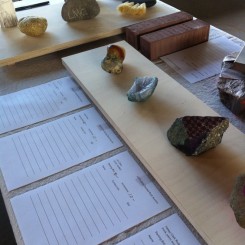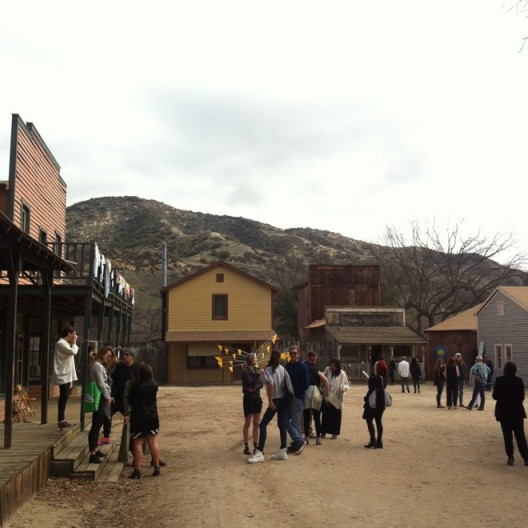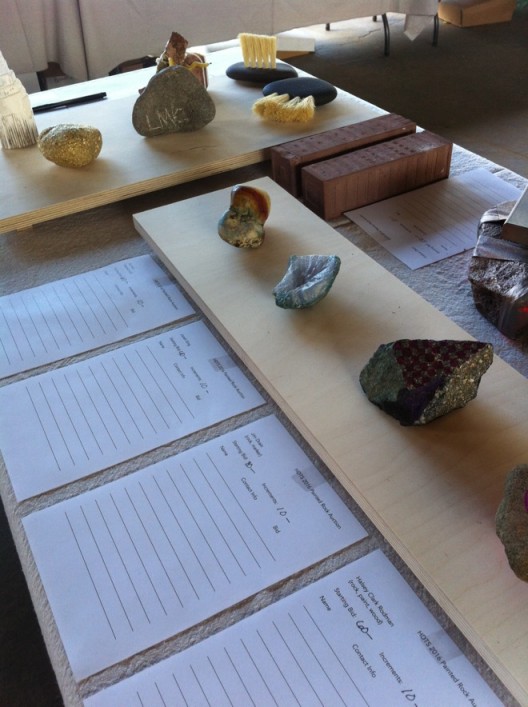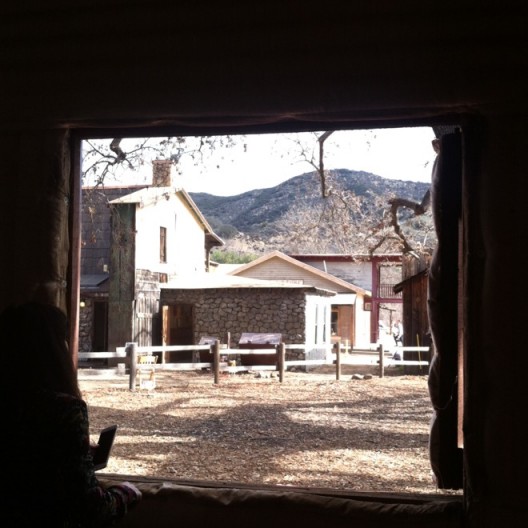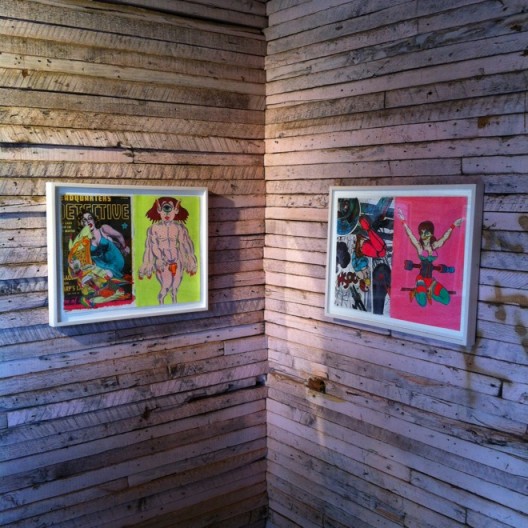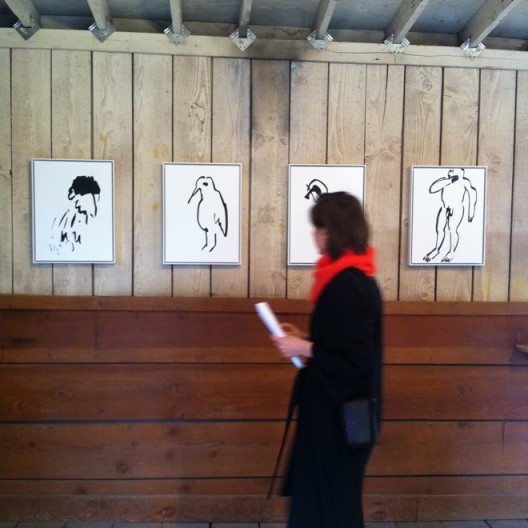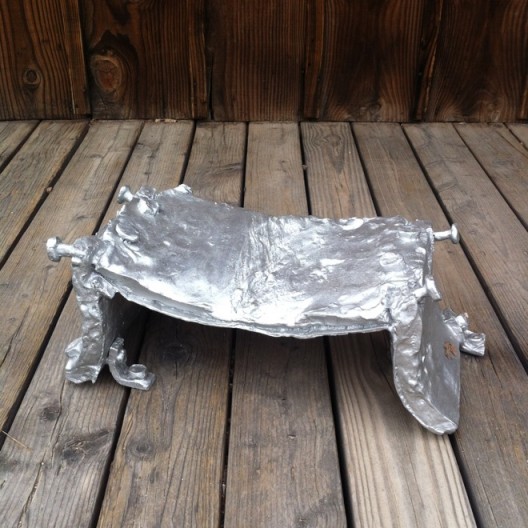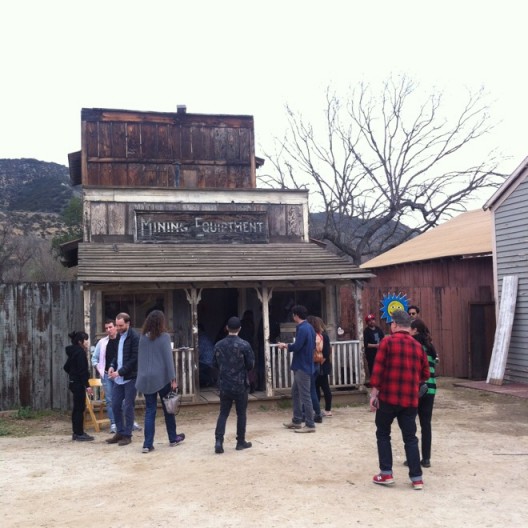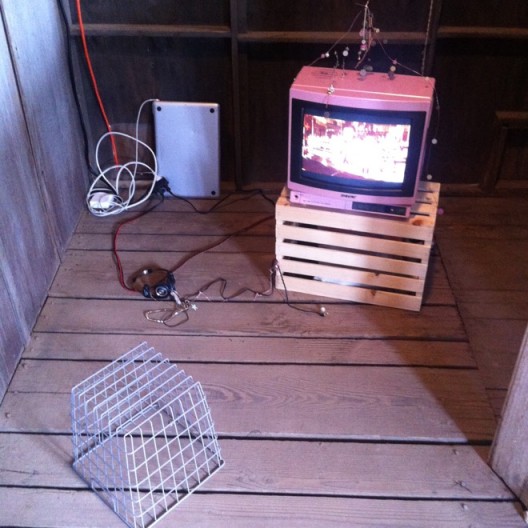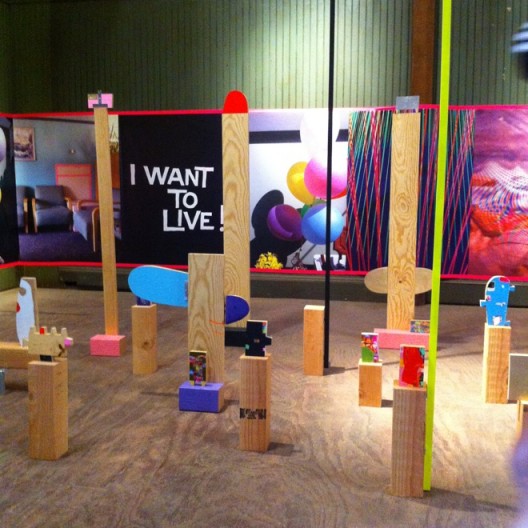Of the reports that bounded online after the first day of Paramount Ranch last weekend, little was said in criticism. They focus on the unusual character of this small fair, in which participating galleries position artworks around an old wooden ranch hiding in the Santa Monica Mountains in Los Angeles County. Artspace found it “uniquely pleasant”; Artnet credited it with being “free-spirited” and for “putting a fresh spin on the format”; W with satisfaction called it the “wild west of art fairs”. A less impressed gallerist there said, “People just like coming to LA”. Paul McCarthy’s giant green inflatable “Tree”, visible from the road, penetrated the vista disproportionally to signal the fair’s presence and provide amusing photo opportunities.
The ranch and surrounding site was purchased by Paramount Studios in 1927, and, though it is now largely defunct as a film set, is part of a national park and available for weddings, birthdays, photography and, for the past three years, this boutique two-day art fair. Paramount Ranch is precisely as one would imagine or might remember from swashbuckling movies, with shabby wooden doors, a saloon bar, barns, a corral and smaller wooden huts with signs like “mining equipment” in large, weather-beaten print on the paneled façade. The eponymous fair is precisely the opposite of all the fairs you might have attended—their primed white panels forested inside in yawning exhibition centers and glowing translucent tents (Art LA Contemporary, or ALAC, also last weekend, happens in an airplane hangar in Santa Monica, but inside, the global-standard booths remain). At Paramount, gallerists were nonetheless encouraged not to let new holes mark the wooden walls, though existing nails helped. Visitors traipsed flatly between wooden shacks containing fresh’n'edgy works of art. Some galleries had played effectively to the setting, like Freddy (Baltimore), with snake sculptures by Puppies Puppies laid on hay bales; paintings by Liao Guohe were both striking and popular in BANK’s (Shanghai) wooden room, and Mendes Wood DM (São Paolo) did well to place a silver oil paint on bronze sculpture of a half-collapsed, bolted metal form by Paolo Monteiro on the porch of the “barbershop”. Elsewhere there were good and bad works, those that failed being the ones that were less distracting than the setting they were found in, or those that would look brash or insecure anywhere. A pleasing inclusion was an open, on paper auction of small pieces produced by artists at the experimental High Desert Test-Sites project in California.
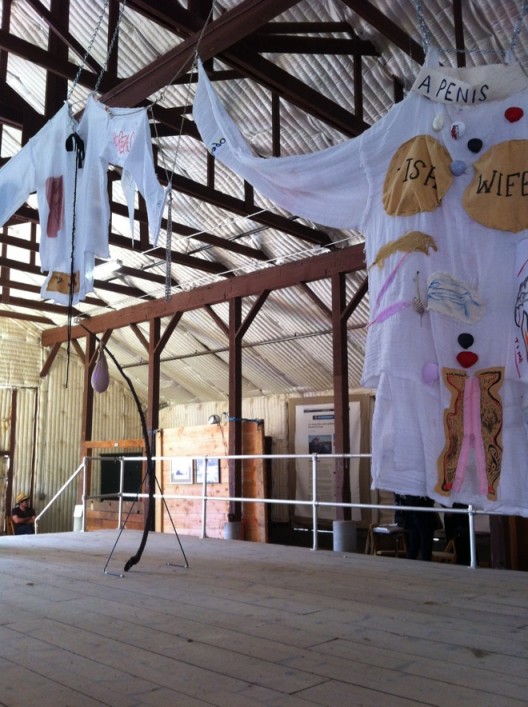
Claire Barrow and Reba Maybury, “Fish Wifes”, installation at Paramount Ranch (Shoot the Lobster, New York)
Paramount Ranch, of which this was the third and apparently last edition (the founders are busy elsewhere), is an idea hatched between the artist Pentti Monkkonnen, his partner Liz Craft, and the gallerists Alex Freedman and Robbie Fitzpatrick, who relocated from Berlin to LA and opened Freedman Fitzpatrick gallery there in 2013. “It’s relaxing,” some visitors were heard to remark of the atmosphere, which included pet dogs and coffee sold from a trestle table to the tune of a buzzing generator (the Flash Art café still had a macrobiotic sushi plate mimicking the design of the mag’s current Issey Miyake cover, thanks to the artist and now Flash Art special projects coordinator Cyril Duval). Yet the stalking presence of a number of famous bodies—Stefan Simchowitz (the New York Times called him the art world’s Patron Satan) shaking the hand of Art Rank founder Carlos Rivera, the prolific LA collector Dean Valentine, Jeffrey Deitch (recently re-installed in New York as a commercial gallerist) and the German über-gallerist Johann Koenig surely meant that such a sensation was merely a thin veil—at least for the dealers involved. The Ranch setting felt like just that—a stage set, and it was weird indeed. Paramount Ranch seemed a perfect embodiment of the art world’s inclination—and continuing license—to ask not “why?”, but “why not?” Deconstruct it and they will come.

